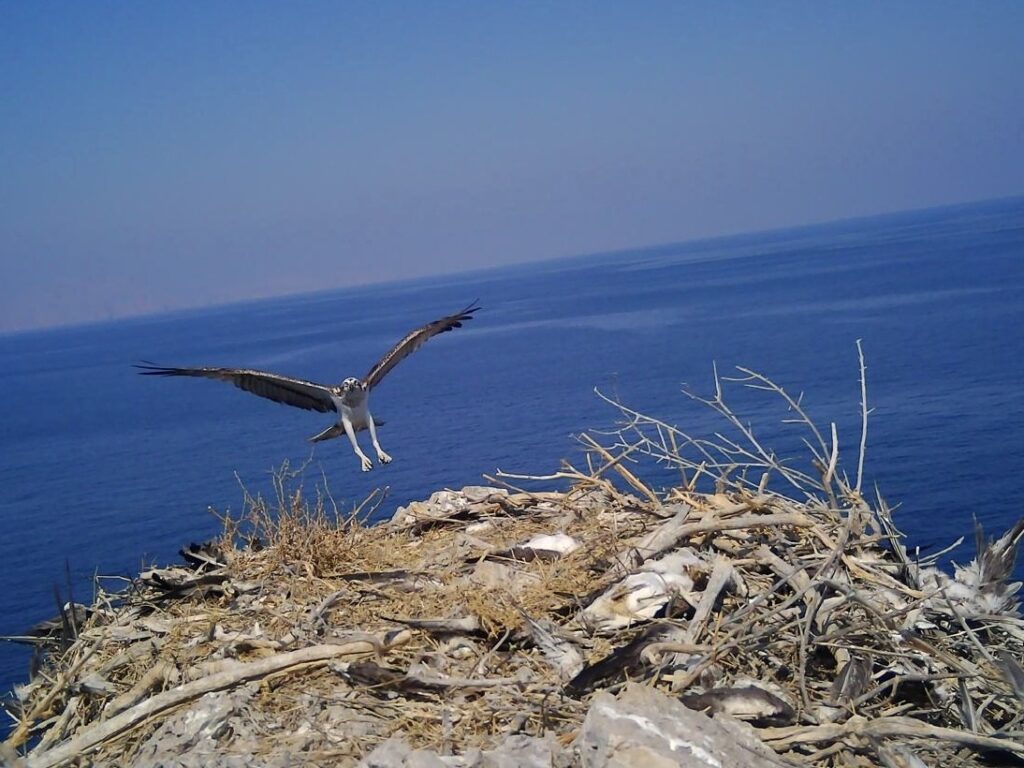MUSCAT – The osprey, a large bird of prey recognisable by its white head, brown wings, yellowish eyes, and powerful talons, typically inhabits coastal areas and islands, feeding on surface fish. While classified globally as a threatened species, the osprey is considered less vulnerable in Oman, making local monitoring and behavioral studies crucial for its conservation.
Engineer Noura bint Abdullah Al Shehhi, Head of the Biodiversity and Vegetation Development Department at the Environment Authority in Musandam, emphasized that the study represents an important step in documenting Oman’s marine biodiversity. She noted that the results will help develop effective strategies to protect the osprey and its natural habitats.


The study recorded 45 osprey nests across various locations in Musandam, including 19 nests containing eggs, with each nest holding between one and four eggs. Conducted between January and April 2025, the survey utilised modern tools including traps, professional cameras, GPS devices, and field surveys by a specialized team. The collected data were analysed using Geographic Information Systems (GIS) software and compared with regional and international studies to better understand osprey behaviour and environmental preferences.
Read More
- Two repeat offenders held for sabotage and cable theft from Amerat power distribution station in Muscat
- Dhofar Municipality removes unlicensed kiosks in Salalah, cracks down on expat-run businesses
- Over RO 183 million allocated for strategic development projects in Oman’s North Al Sharqiyah Governorate
- Oman expresses solidarity with India and Pakistan following explosions
- Over 2.1 million job applications submitted via Oman’s ‘Ma’ak’ labour services app
Engineer Al Shehhi explained that ospreys prefer nesting in close groups on mountainous outcrops and remote islands of the Musandam Peninsula, particularly in the eastern Khasab region, while the western areas, including Bukha and parts of Dibba, serve as primary feeding grounds.
The study also highlighted natural threats to ospreys, including habitat degradation, climate change, and predation on nests and eggs by mountain foxes, Indian crows, and terns. Notably, no human-induced threats or hunting activities were recorded in the region.
Salem bin Humaid Al Junaibi, Director of the Environment Authority in Musandam, stated that the project aligns with the Authority’s mission to preserve and develop terrestrial and marine wildlife, strengthen environmental research systems, expand Oman’s biodiversity database, and support national efforts to protect endangered species while ensuring ecosystem sustainability.







